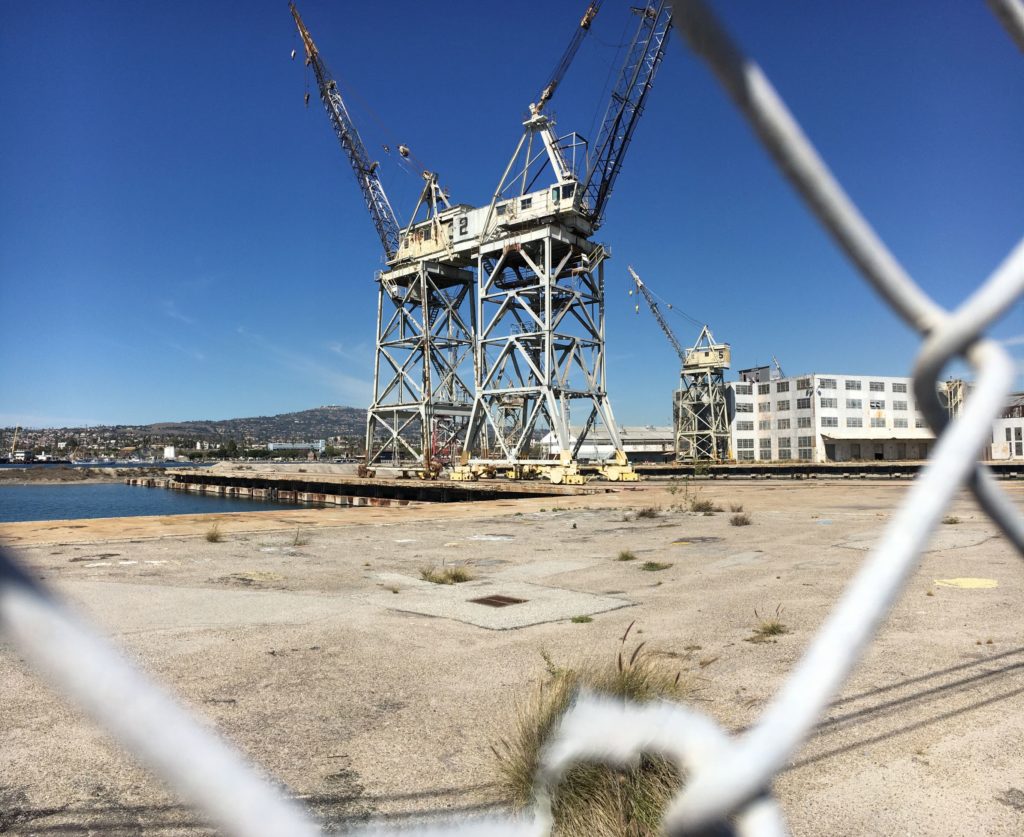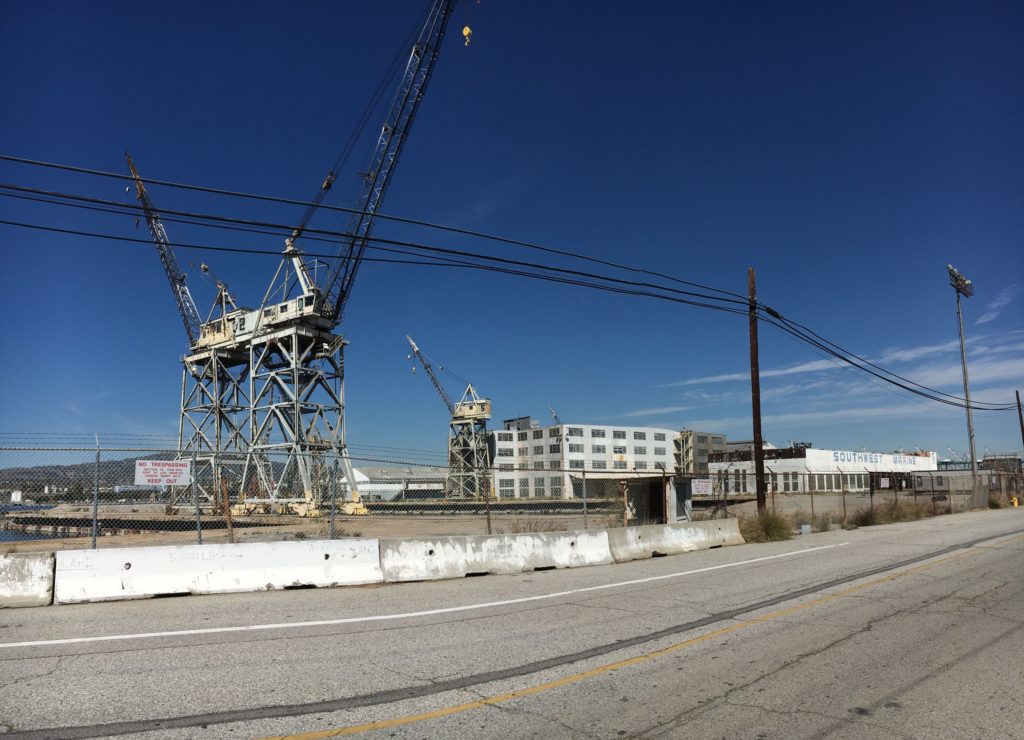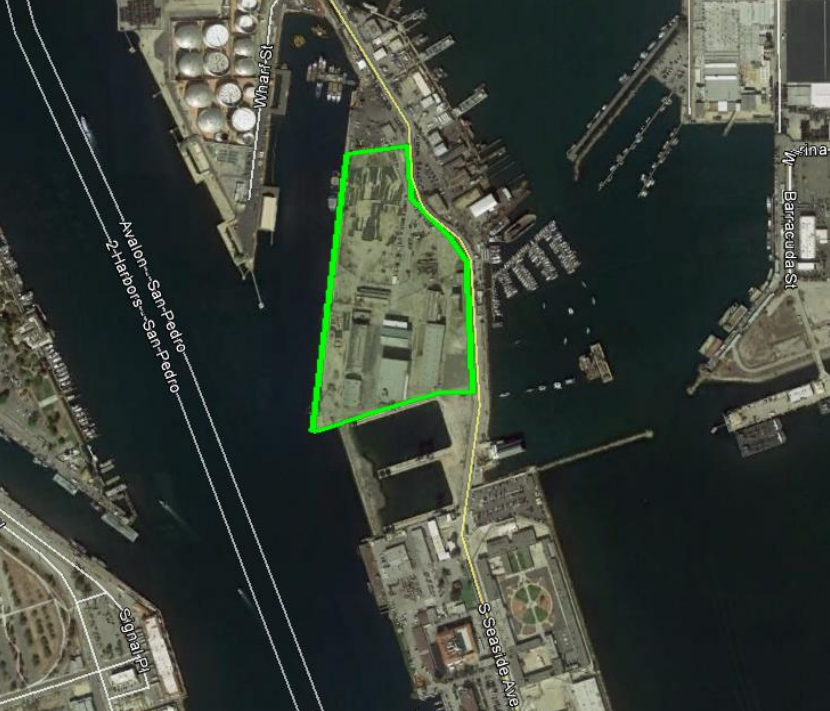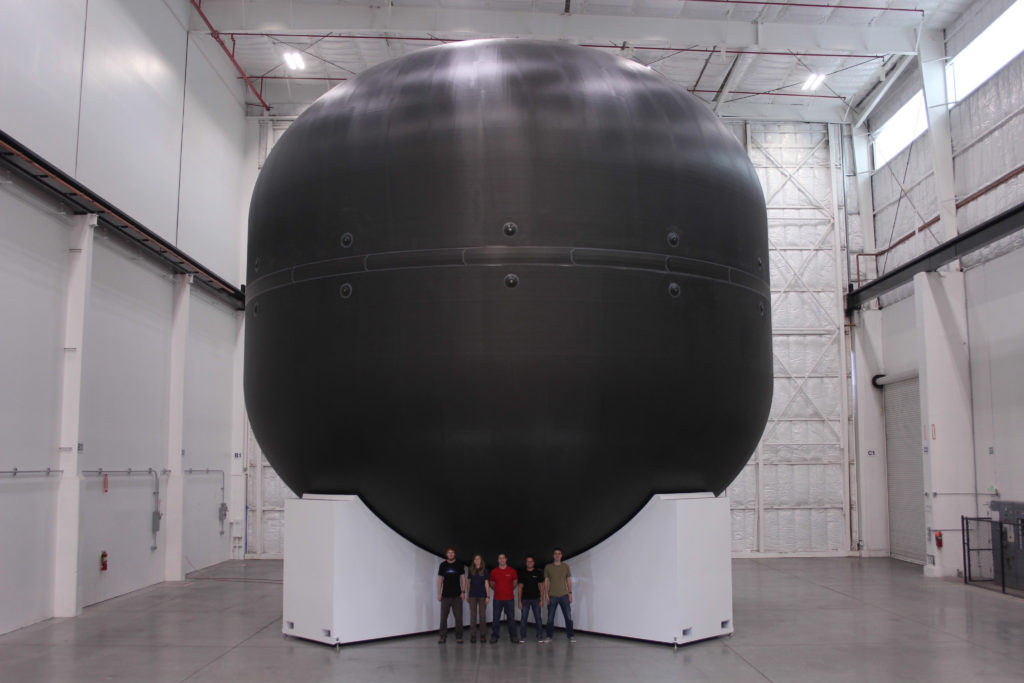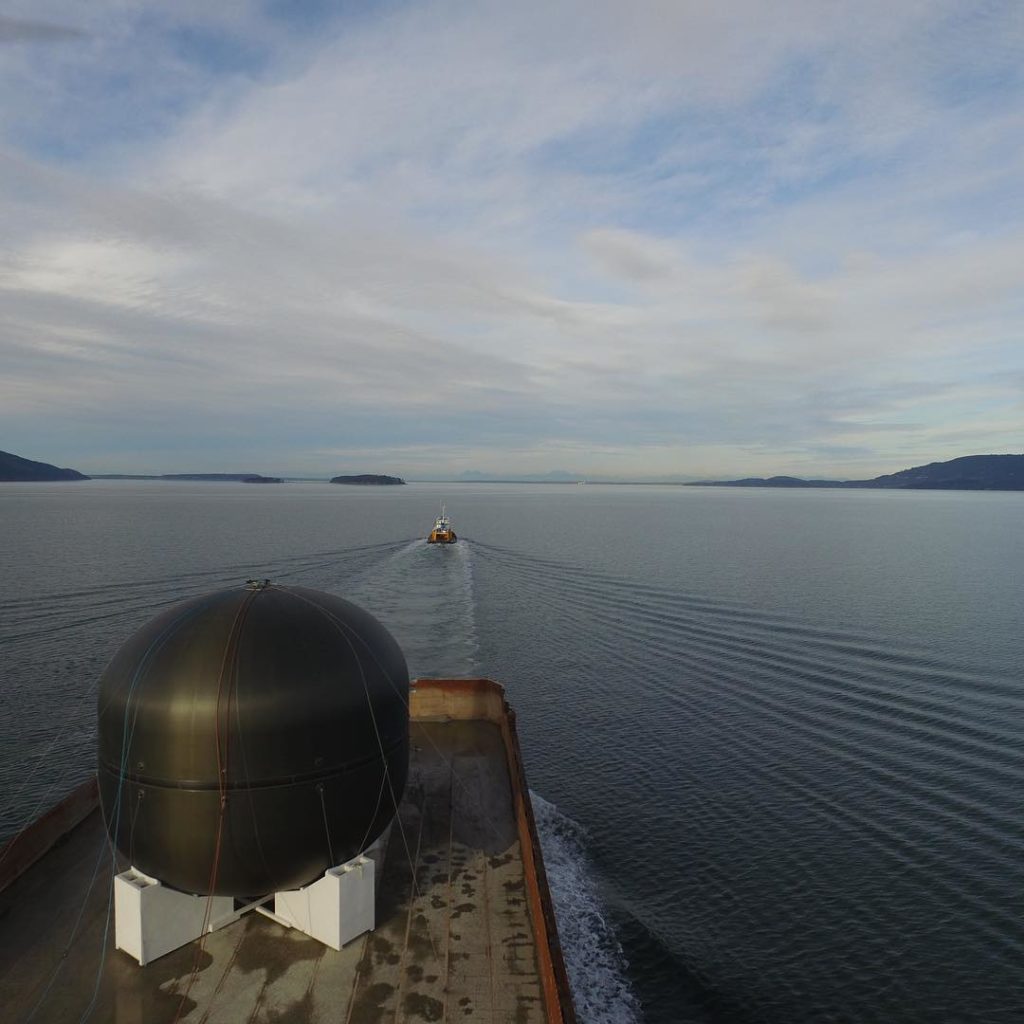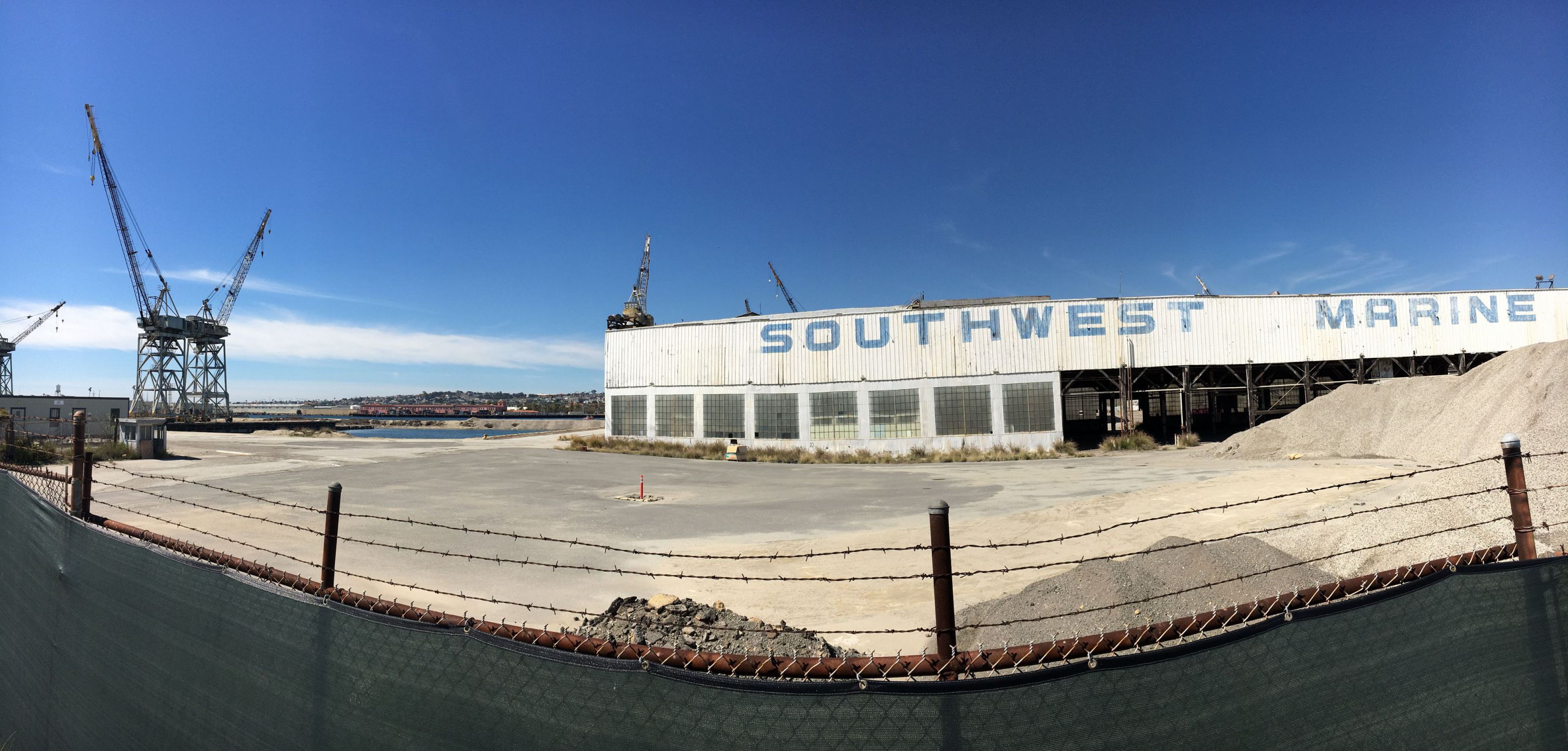

News
SpaceX’s first BFR manufacturing facility approved by the Port of LA
SpaceX has been given initial approval by the Port of Los Angeles to acquire and develop a massive vacant lot into a facility capable of manufacturing the first BFR prototypes and refurbishing the company’s reusable Falcon 9 boosters. This approval is without a doubt the biggest step forward yet for the company’s ultimate goal of sending massive spaceships to Mars.
A request summary completed on March 6 details SpaceX’s proposal, laying out a bright future of rocket manufacturing for the abandoned 18-acre lot at Berth 240, one that might soon support “composite curing, cleaning, painting, and assembly [of commercial transportation vessels]” that “would need to be transported by water due to their size.” This description meshes almost perfectly with past discussion of BFR manufacturing plans from SpaceX executives like Elon Musk and Gwynne Shotwell, both of which have in the recent past affirmed the need for any BFR manufacturing facility to be located adjacent to a large body of water due to the difficulty of transporting rocket hardware as large as BFR.
- Might those cranes be refurbished? (Pauline Acalin)
- Teslarati photographer Pauline Acalin took a trip down to the Port to take a look at the vacant lot. (Pauline Acalin)
- An outline of the Port of San Pedro lot SpaceX hopes to develop. (Port of LA)
On March 15, around a week after the environmental impact assessment gave a green light for SpaceX’s facility, Port of Los Angeles’ Board of Harbor Commissioners approved the proposal, effectively giving SpaceX permission to begin serious demolition and construction activities at Berth 240, an abandoned lot located on the San Pedro side of the greater Port of Los Angeles, which refers to both Ports of San Pedro and Long Beach. To provide context, SpaceX’s primary manufacturing facilities in Hawthorne, CA occupy 10-15 acres of urban real estate – in other words, even partial development of Berth 240’s 18 acres would mark a huge expansion of the company’s available manufacturing and refurbishment space, an absolute necessity for the construction of a launch vehicle as large as BFR.
The construction of such a facility would make it significantly easier for SpaceX to build its first BFR/BFS prototypes, avoiding the massive disruption and cost that transporting the 9m-diameter vehicle through downtown LA. Rather than dealing with that nightmare, SpaceX would instead be able to simply crane an assembled booster or spaceship onto a barge (perhaps a drone ship?) that would then ship the rocket hardware through the Panama Canal to the company’s facilities in Cape Canaveral, FL or Boca Chica, TX.
Caught a glimpse of SpaceX’s upcoming Mars facility. @teslarati #SpaceX #BFR pic.twitter.com/hNWzIL5jeH
— Pauline Acalin (@w00ki33) March 19, 2018
While it is likely to take a fair amount of time to prepare the lot for the construction of a facility capable of manufacturing advanced composite rocket components, the wording in the Port documentation also suggests that SpaceX means to transfer its Falcon 9 recovery work to the new berth as soon as it’s available. Indeed, the comparatively massive space would give SpaceX far more room for recovery operations with the drone ship Just Read The Instructions (JRTI), and could potentially become a one-stop-shop for booster recovery and refurbishment. As of now, boosters recovered on the West Coast are transported to the Hawthorne factory for all refurbishment work, operations that themselves already require brief road stoppages to accommodate the sheer size of Falcon 9. As of 2018, SpaceX is planning for BFR to be 50% taller and close to three times as wide as Falcon 9 (350 feet long and 30 feet in diameter).
Although SpaceX is specifically named in the study, the company appears to have created a distinct LLC to lease the lot, referred to as “WW Marine Composites” by the authors. At the point of publishing, WW Marine Composites does at least appear to exist, but that is the sum of all info available on the circa-2016 LLC. This obscure, stealthy LLC appears to continue SpaceX’s habit of purchasing and leasing land through shell corporations, a common behavior of businesses thanks to its tax benefits and protection against liability. Finally, an additional document from December 2017 hints that SpaceX is still working closely with Janicki Industries, a globally-renowned carbon composite structures manufacturer that SpaceX tasked with the creation of the first 12m-diameter composite tank, revealed to the surprise of almost everyone in 2016 and soon after tested to destruction in 2017.
- SpaceX’s carbon fiber Starship tank prototype, revealed during Elon Musk’s 2016 IAC presentation. (SpaceX)
- SpaceX’s massive carbon fiber liquid oxygen tank seen testing in Northern Washington. BFR’s tankage will be 25% narrower, and thus easier to manufacture. (SpaceX)
- BFR’s booster and spaceship, tiny human for scale. (SpaceX)
Regardless, it will be exciting to watch SpaceX develop what will likely become its newest property acquisition. BFR is a massive rocket and will require commensurately massive manufacturing hardware, hardware that is likely to be spotted by any number of eagle-eyed SpaceX fans and observers in the LA area. Berth 240 may also uniquely lend itself to some incredible photos of the company’s progress, thanks in part to the fact that it’s all but surrounded by shoreline that is accessible to the public. Teslarati photographer Pauline Acalin visited the site just after receiving insight on the latest development to get a feel for the location.

It’s liable (and perhaps probable) to change, but curious observer can currently walk up right beside Berth 240, a location that might soon support SpaceX’s first BFR manufacturing. (Pauline Acalin)
Follow us for live updates, behind-the-scenes sneak peeks, and a sea of beautiful photos from our East and West coast photographers.
Teslarati – Instagram – Twitter
Tom Cross – Twitter
Pauline Acalin – Twitter
Eric Ralph – Twitter
News
Tesla launches in India with Model Y, showing pricing will be biggest challenge
Tesla finally got its Model Y launched in India, but it will surely come at a price for consumers.

Tesla has officially launched in India following years of delays, as it brought its Model Y to the market for the first time on Tuesday.
However, the launch showed that pricing is going to be its biggest challenge. The all-electric Model Y is priced significantly higher than in other major markets in which Tesla operates.
On Tuesday, Tesla’s Model Y went up for sale for 59,89,000 rupees for the Rear-Wheel Drive configuration, while the Long Range Rear-Wheel Drive was priced at 67,89,000.
This equates to $69,686 for the RWD and $78,994 for the Long Range RWD, a substantial markup compared to what these cars sell for in the United States.
🚨 Here’s the difference in price for the Tesla Model Y in the U.S. compared to India.
🚨 59,89,000 is $69,686
🚨 67,89,000 is $78,994 pic.twitter.com/7EUzyWLcED— TESLARATI (@Teslarati) July 15, 2025
Deliveries are currently scheduled for the third quarter, and it will be interesting to see how many units they can sell in the market at this price point.
The price includes tariffs and additional fees that are applied by the Indian government, which has aimed to work with foreign automakers to come to terms on lower duties that increase vehicle cost.
Tesla Model Y seen testing under wraps in India ahead of launch
There is a chance that these duties will be removed, which would create a more stable and affordable pricing model for Tesla in the future. President Trump and Indian Prime Minister Narendra Modi continue to iron out those details.
Maharashtra Chief Minister Devendra Fadnavis said to reporters outside the company’s new outlet in the region (via Reuters):
“In the future, we wish to see R&D and manufacturing done in India, and I am sure at an appropriate stage, Tesla will think about it.”
It appears to be eerily similar to the same “game of chicken” Tesla played with Indian government officials for the past few years. Tesla has always wanted to enter India, but was unable to do so due to these import duties.
India wanted Tesla to commit to building a Gigafactory in the country, but Tesla wanted to test demand first.
It seems this could be that demand test, and the duties are going to have a significant impact on what demand will actually be.
Elon Musk
Tesla ups Robotaxi fare price to another comical figure with service area expansion
Tesla upped its fare price for a Robotaxi ride from $4.20 to, you guessed it, $6.90.

Tesla has upped its fare price for the Robotaxi platform in Austin for the first time since its launch on June 22. The increase came on the same day that Tesla expanded its Service Area for the Robotaxi ride-hailing service, offering rides to a broader portion of the city.
The price is up from $4.20, a figure that many Tesla fans will find amusing, considering CEO Elon Musk has used that number, as well as ’69,’ as a light-hearted attempt at comedy over the past several years.
Musk confirmed yesterday that Tesla would up the price per ride from that $4.20 point to $6.90. Are we really surprised that is what the company decided on, as the expansion of the Service Area also took effect on Monday?
But the price is now a princely $6.90, as foretold in the prophecy 😂
— Elon Musk (@elonmusk) July 14, 2025
The Service Area expansion was also somewhat of a joke too, especially considering the shape of the new region where the driverless service can travel.
I wrote yesterday about how it might be funny, but in reality, it is more of a message to competitors that Tesla can expand in Austin wherever it wants at any time.
Tesla’s Robotaxi expansion wasn’t a joke, it was a warning to competitors
It was only a matter of time before the Robotaxi platform would subject riders to a higher, flat fee for a ride. This is primarily due to two reasons: the size of the access program is increasing, and, more importantly, the service area is expanding in size.
Tesla has already surpassed Waymo in Austin in terms of its service area, which is roughly five square miles larger. Waymo launched driverless rides to the public back in March, while Tesla’s just became available to a small group in June. Tesla has already expanded it, allowing new members to hail a ride from a driverless Model Y nearly every day.
The Robotaxi app is also becoming more robust as Tesla is adding new features with updates. It has already been updated on two occasions, with the most recent improvements being rolled out yesterday.
Tesla updates Robotaxi app with several big changes, including wider service area
News
Tesla Model Y and Model 3 dominate U.S. EV sales despite headwinds
Tesla’s two mainstream vehicles accounted for more than 40% of all EVs sold in the United States in Q2 2025.

Tesla’s Model Y and Model 3 remained the top-selling electric vehicles in the U.S. during Q2 2025, even as the broader EV market dipped 6.3% year-over-year.
The Model Y logged 86,120 units sold, followed by the Model 3 at 48,803. This means that Tesla’s two mainstream vehicles accounted for 43% of all EVs sold in the United States during the second quarter, as per data from Cox Automotive.
Tesla leads amid tax credit uncertainty and a tough first half
Tesla’s performance in Q2 is notable given a series of hurdles earlier in the year. The company temporarily paused Model Y deliveries in Q1 as it transitioned to the production of the new Model Y, and its retail presence was hit by protests and vandalism tied to political backlash against CEO Elon Musk. The fallout carried into Q2, yet Tesla’s two mass-market vehicles still outsold the next eight EVs combined.
Q2 marked just the third-ever YoY decline in quarterly EV sales, totaling 310,839 units. Electric vehicle sales, however, were still up 4.9% from Q1 and reached a record 607,089 units in the first half of 2025. Analysts also expect a surge in Q3 as buyers rush to qualify for federal EV tax credits before they expire on October 1, Cox Automotive noted in a post.
Legacy rivals gain ground, but Tesla holds its commanding lead
General Motors more than doubled its EV volume in the first half of 2025, selling over 78,000 units and boosting its EV market share to 12.9%. Chevrolet became the second-best-selling EV brand, pushing GM past Ford and Hyundai. Tesla, however, still retained a commanding 44.7% electric vehicle market share despite a 12% drop in in Q2 revenue, following a decline of almost 9% in Q1.
Incentives reached record highs in Q2, averaging 14.8% of transaction prices, roughly $8,500 per vehicle. As government support winds down, the used EV market is also gaining momentum, with over 100,000 used EVs sold in Q2.
Q2 2025 Kelley Blue Book EV Sales Report by Simon Alvarez on Scribd
-

 News3 days ago
News3 days agoTesla debuts hands-free Grok AI with update 2025.26: What you need to know
-

 Elon Musk6 days ago
Elon Musk6 days agoxAI launches Grok 4 with new $300/month SuperGrok Heavy subscription
-

 Elon Musk1 week ago
Elon Musk1 week agoElon Musk confirms Grok 4 launch on July 9 with livestream event
-

 News2 weeks ago
News2 weeks agoTesla Model 3 ranks as the safest new car in Europe for 2025, per Euro NCAP tests
-

 Elon Musk2 weeks ago
Elon Musk2 weeks agoxAI’s Memphis data center receives air permit despite community criticism
-

 News5 days ago
News5 days agoTesla begins Robotaxi certification push in Arizona: report
-

 Elon Musk2 weeks ago
Elon Musk2 weeks agoTesla reveals it is using AI to make factories more sustainable: here’s how
-

 Elon Musk2 weeks ago
Elon Musk2 weeks agoTesla scrambles after Musk sidekick exit, CEO takes over sales

